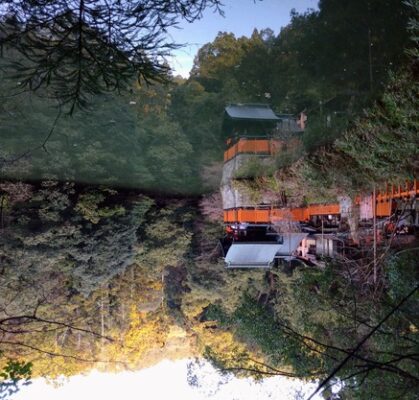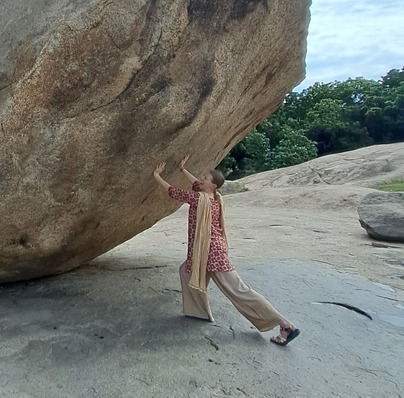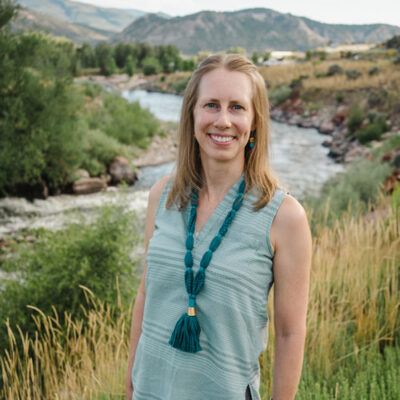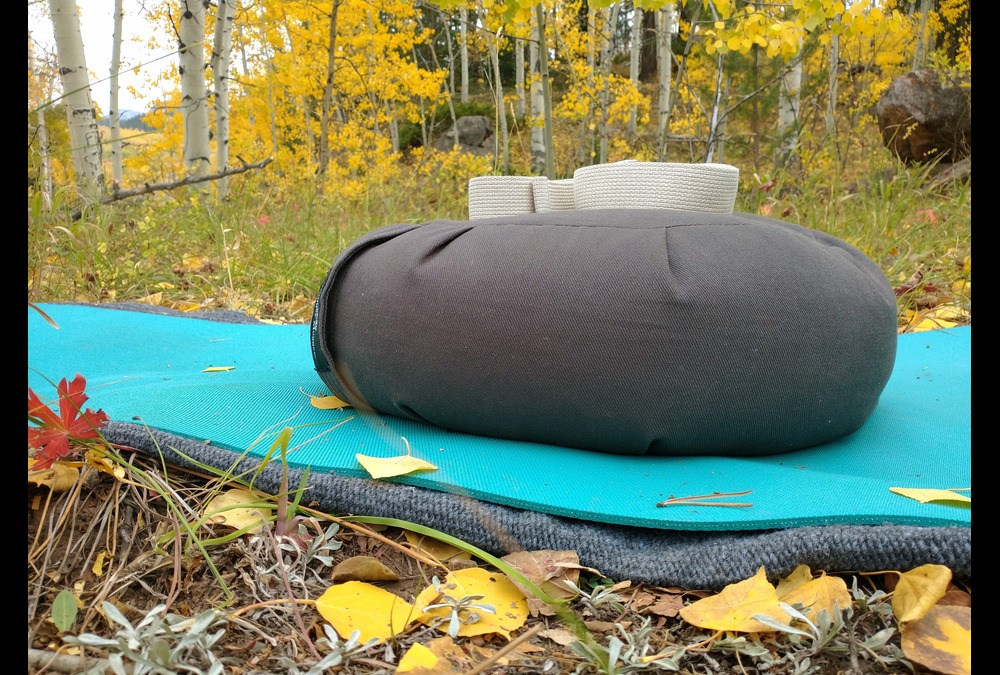“Why can’t I calm my mind?!”
I’ve said this to myself many times. And I’ve heard many women say this to me over the years. It seems logical to search out tools and techniques to help ourselves try to calm down the mind. But a lot of times it ends up feeling like we’re throwing things at the problem without getting results. What is missing is taking the time to get crystal clear on what it is we really want and the right tools we need to get there.
WHAT ‘CALM’ ARE YOU LOOKING FOR?
It took me years to get to this point – figuring out what I want and why. Until that clarity happened, I spent most of my time searching and grasping for solutions, never really giving anything the time it needed to work. This is the cycle most of us are in: Find a new tool, use it and feel better, so stop using the tool; Then things get worse again, start searching for another tool, use it, feel better, stop using the tool. Have you done this?
When you talk about calming the mind, in that moment, you just want relief. Having a calm mind is different than just finding relief. Many times, you want relief but underneath there’s also an expectation that the relief should last – forever. If a tool doesn’t give you that after using it for a month, the conclusion is ‘it doesn’t work.’ Even though it did work to get you the relief you desired.
There’s a big difference between calming the mind and a calm mind. One is an action and one is a state of being.
Take a moment to get clear – do you want to be able to calm the mind for relief or have a calm mind? Or maybe both?
If you’re just looking for tools and techniques to do the action of calming the mind and find in-the-moment relief, great! Go back to the tools and techniques you’ve already learned and keep using them. Stop searching for more and use what you have. Repetition or japa, is essential to make a tool or technique a habit.
If your goal is to have a calm mind state, then keep reading. (Spoiler alert: What I’m suggesting isn’t easy but it will get you the transformation to a calm mind state you are looking for).
DEFINE CALM MIND
What is a calm mind?
Patanjali Yoga Sutras defines a calm mind as a mind that has no distractions, is steady and has a one-point focus towards Self-realization.
In the Bhagavad Gita, a calm mind is able to see ‘good’ and ‘bad’ as the same, is undisturbed by change, and meets everyone with the same non-judgment.

What is real and what is a reflection?
My definition of a calm mind is remaining steady, content, and undisturbed in the face of life situations and circumstances so one can respond with meaningful curiosity about Reality.
What is your definition?
Take some time with this. Brainstorm, look up definitions of ‘calm mind,’ and write the definition of the calm mind you want to cultivate. It doesn’t have to be perfect. It’s a working definition that most likely will change over time. Definitions aren’t ‘truth’ because they can change…but using them can help us move closer to Truth.
Do you have your definition written down? Awesome. Let’s keep going.
HOW TO ‘GET’ A CALM MIND
Now that you have your definition and you know where you want to go, it’s time to decide the route and how to get there.
The route is the principles, philosophy, values and path that resonate most with you.
My ‘route’ is Traditional Yoga, specifically the routes laid out in Patanjali Yoga Sutras and the Bhagavad Gita. I look at these two Yoga scriptures as my maps that I keep referring back to on a daily basis. It’s important to find a route and maps because on any long journey, it’s easy to get lost. Consulting my route map helps me stay on track.
This is the reason that just having tools and techniques isn’t the answer. The tools have to be relevant for the journey you’re taking. If my route takes me over dirt trails, mountains, and streams, getting a pair of high heels isn’t going to help me and is a waste of space even though they may be cute.

When has the technique reached its limits?
And every tool has its limit. For example, let’s say my ‘tool’ for a calm mind is exercise. I exercise and I feel more calm and clear-headed, so I keep doing it. But, when I’m injured and unable to exercise, my mind gets depressed and feels like I’m never going to get a calm mind. I feel like a failure. I need a different tool to use.
Inevitably, I will start searching for another tool and start using that until I run up against its limitations. Then I’ll spiral down until I decide to search for another tool. This is the cycle created when we just focus on tools and techniques. Up, down, up, down…with no lasting calm in sight.
If I have a route, when my tool comes to its limit, I can look at my route to help navigate me back, refocus on where I’m going, and keep moving forward. When exercise isn’t able to help me when I’m sick or injured, I reconnect with the principles and values of the Yoga Sutras and Bhagavad Gita to remind me where I’m at and where I’m looking to go. I might modify exercise and I might increase my use of another tool. The tool will not get me where I want to go…it’s how I use my tools that will keep me going forward.
And just because exercise doesn’t work when I’m sick or injured doesn’t mean that I throw it out. There are very few tools that work for all situations. Most are part of our ‘tool team’ that we become experts in how and when to use them with practice.
GET CLEAR ON YOUR ROUTE
Now, I have more options because exercise is a tool, not the end point. I can consciously choose other tools as well that help me take action towards a calm mind state, not just one action of calming the mind for in-the-moment relief.

Photo by Life Folk on Pexels
So, what is your route and map? You may not have one yet and that’s okay. Think about times when you naturally feel more calm and when calm lasts longer.
- Where is your mind state at currently, over the past several months?
- What else do you feel when your mind is calm?
- Who are you around when this happens?
You may need to start prioritizing time to explore different routes that talk about leading to your definition of calm. After doing that for a bit, choose which route you’re sticking with. If you don’t choose, you will end up circling around and around without moving closer to your destination of calm.
You must make a choice at some point. Otherwise, you will be just like a dog chasing its tail, going round and round never getting anywhere.
PRACTICE – THE VEHICLE THAT GETS YOU THERE

Photo by Alfonso Escalante on Pexels
Once you have your route and destination, the last thing you need is your vehicle. I see this as your practice. This is where you integrate and master the tools and techniques that work for you.
In Yoga, sadhana is a daily spiritual practice that’s done consistently over a long period of time.
What are some of your current practices that you do regularly to calm your mind? What are practices that you’d like to try but keep making excuses that keep you from trying them?
Meet yourself where you are now. On a scale of 1-10, where ten equals your definition of a calm mind, and one equals ‘not at all,’ where are you at currently? Be honest with yourself! You’re exactly where you are, no other place to start than right there. If you’ve never meditated before and your route encourages this, expecting to be able to meditate for 30 minutes will be unrealistic. What’s realistic for you? Starting with 5 minutes?
What are 1-3 tools or techniques that your route gives you that you can start practicing on a daily basis? You must keep into account the reality of your schedule and the roles you play (work, partner, parent, etc). Notice I said ‘1-3’ tools or techniques. This is important. Keep your practice simple so that it can go deep and become a lifestyle habit.
As you move forward on your journey, adjustments will have to be made and that’s normal. You might find yourself getting side-tracked from your route, again normal. When you are aware that you’ve gotten off route, stop, consult your maps and get back on route.
Inevitably, the question of ‘when can I change routes’ or ‘when do I try a different tool’ will come up. Answer these two questions:
- Have you mastered the tool so that you no longer have to think about it and it’s become a part of your lifestyle?
- Have you reached your definition of a calm mind?
Once you answer ‘yes,’ then add another tool or find a new definition of ‘calm mind.’ Only change your route if you’ve discerned, over time, that it’s given you what it can or if there is an immovable roadblock. But, make sure to find a new route, not just fall back into searching for tools and techniques.
RECAP THE STEPS TO A CALM MIND STATE
A recap to finding a lasting calm mind state:
- Destination: Your definition of a calm mind.
- Route And Map: What philosophy, values, teachings do you commit to following? (It is also helpful to find a guide or teacher to help you on the route too).
- Vehicle: What is your daily practice and the 1-3 tools that will make up your daily practice?
Definitions create the life we live. It’s time to live your definition of a calm mind and find a lasting state of calm…not just another moment of relief.
Namaste.
 P.S. If your definition of a calm mind includes aspects from the two Yoga-based definitions from above, I invite you to an exploration to see if Traditional Yoga is a ‘route’ for you to cultivate a calm mind. The next 8-week Yamas and Niyamas Sangha starts February 6th, 2024. It’s a group study to learn about the ethical principles of Raja Yoga (Yoga for the Mind), i.e. a ‘map’ towards a calm mind state. 2 spots left! Reply to this email if you’re interested in learning more and I’ll send you the details.
P.S. If your definition of a calm mind includes aspects from the two Yoga-based definitions from above, I invite you to an exploration to see if Traditional Yoga is a ‘route’ for you to cultivate a calm mind. The next 8-week Yamas and Niyamas Sangha starts February 6th, 2024. It’s a group study to learn about the ethical principles of Raja Yoga (Yoga for the Mind), i.e. a ‘map’ towards a calm mind state. 2 spots left! Reply to this email if you’re interested in learning more and I’ll send you the details.

